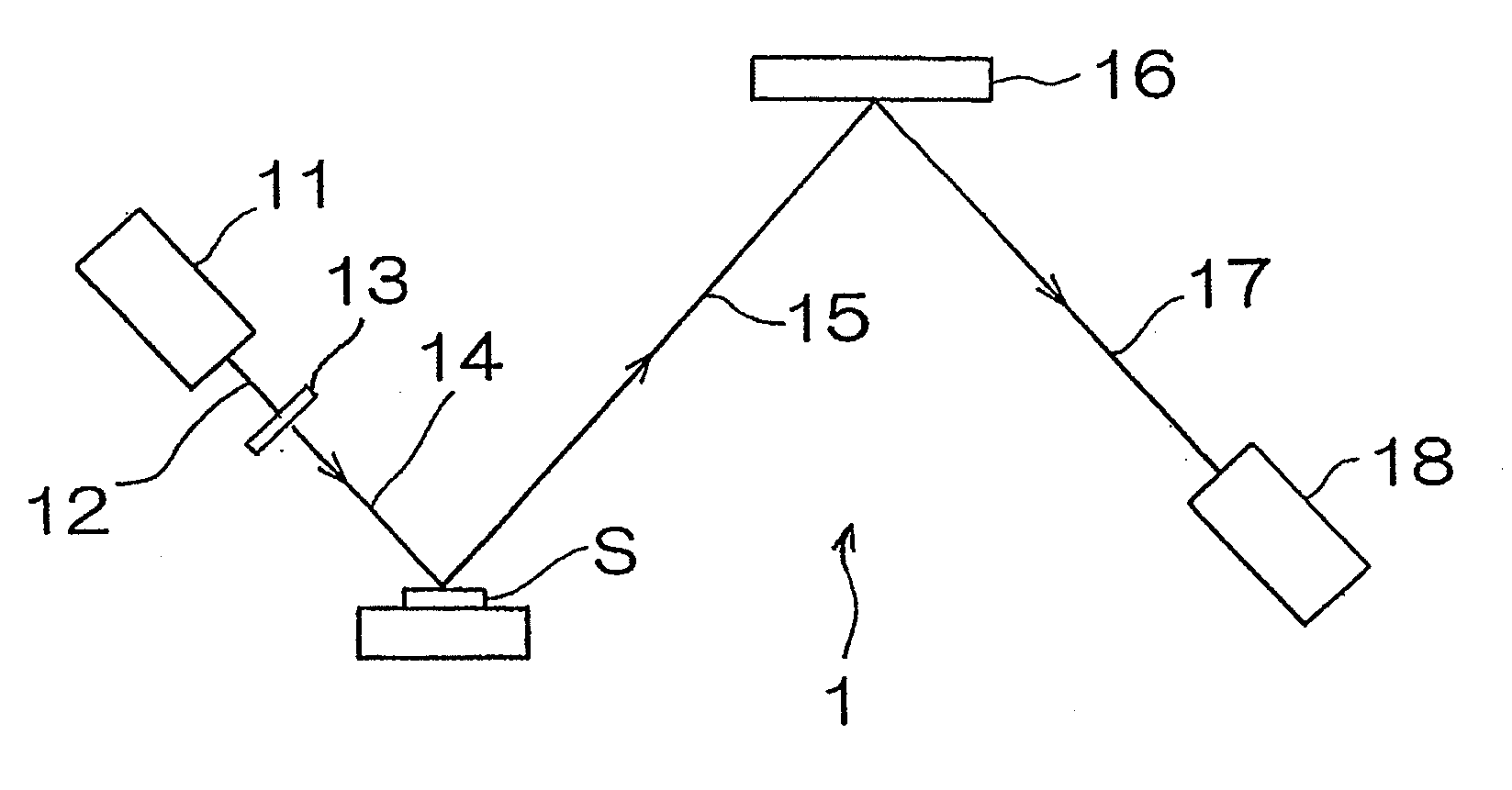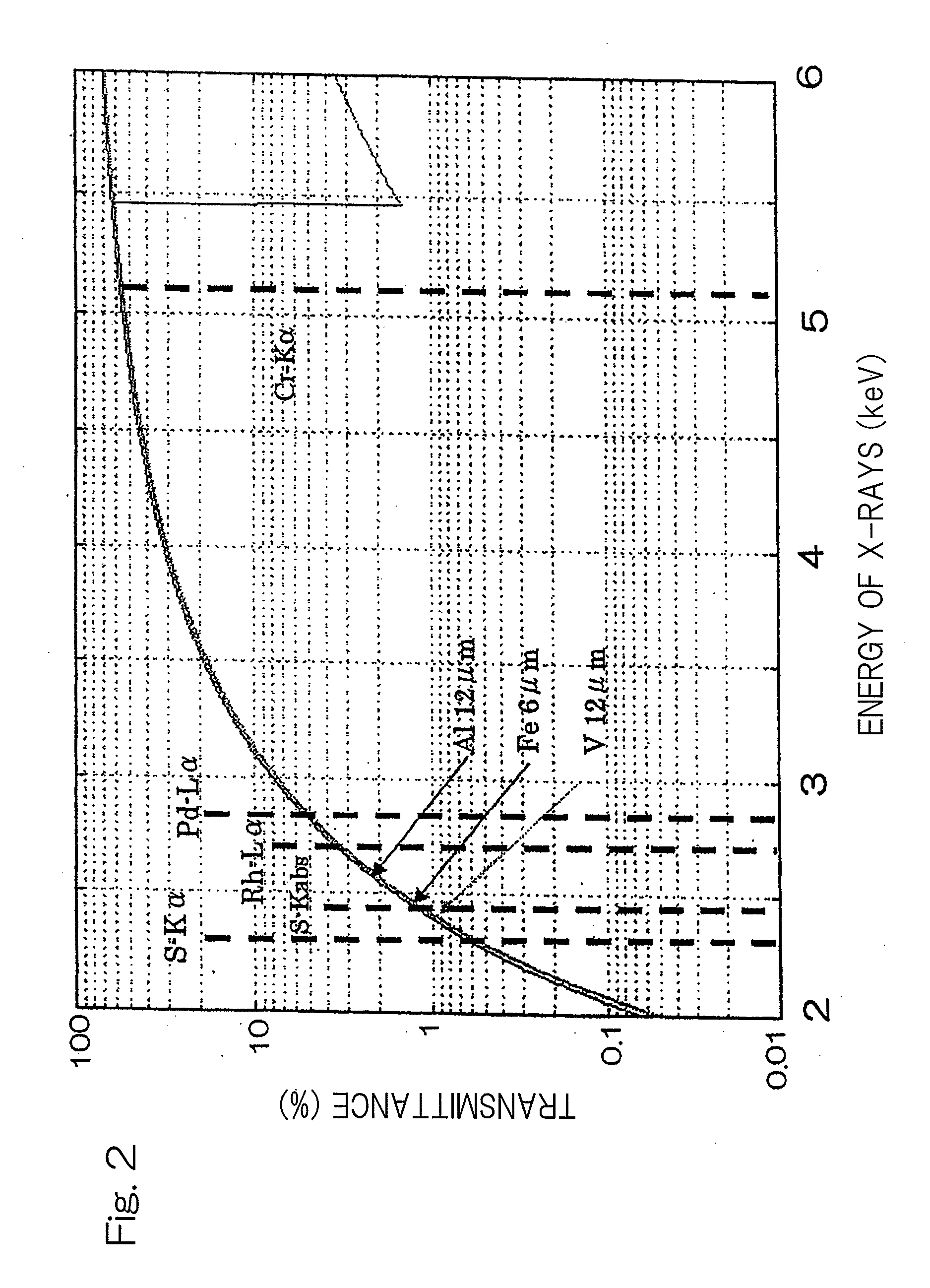X-ray fluorescence spectrometer
a fluorescence spectrometer and x-ray technology, applied in the field of x-ray fluorescence spectrometers, can solve the problems of inability to achieve a sufficiently high precision, and the precision of analysis for a very small amount of sulfur is insufficient to accommodate the recent standard value, so as to achieve the effect of improving the lower limit of detection
- Summary
- Abstract
- Description
- Claims
- Application Information
AI Technical Summary
Benefits of technology
Problems solved by technology
Method used
Image
Examples
Embodiment Construction
[0040]Hereinafter, an X-ray florescence spectrometer according to a first preferred embodiment of the present invention will be described. As shown in FIG. 1, the X-ray fluorescence spectrometer for measuring the concentration of sulfur contained in a diesel oil, which is a kind of fuel oil, includes a chromium X-ray tube 11 having a target of chromium metal, an X-ray filter 13 for transmitting 60% or more of Cr—Kα line of primary X-rays 12 emitted from the chromium X-ray tube and comprised of, for example, an aluminum foil of 12 μm in thickness, a spectroscopic device 16 for monochromating fluorescent X-rays 15 emitted from a sample S, and comprised of, for example, graphite, and a sealed proportional counter 18 filled with a detector gas of, for example, neon gas and operable to detect fluorescent X-rays 17 which have been monochromated.
[0041]FIG. 2 illustrates respective X-ray transmittances of energies when an filter having aluminum of 12 μm in thickness, a filter having iron of...
PUM
| Property | Measurement | Unit |
|---|---|---|
| transmittance | aaaaa | aaaaa |
| transmittance | aaaaa | aaaaa |
| thickness | aaaaa | aaaaa |
Abstract
Description
Claims
Application Information
 Login to View More
Login to View More - R&D
- Intellectual Property
- Life Sciences
- Materials
- Tech Scout
- Unparalleled Data Quality
- Higher Quality Content
- 60% Fewer Hallucinations
Browse by: Latest US Patents, China's latest patents, Technical Efficacy Thesaurus, Application Domain, Technology Topic, Popular Technical Reports.
© 2025 PatSnap. All rights reserved.Legal|Privacy policy|Modern Slavery Act Transparency Statement|Sitemap|About US| Contact US: help@patsnap.com



